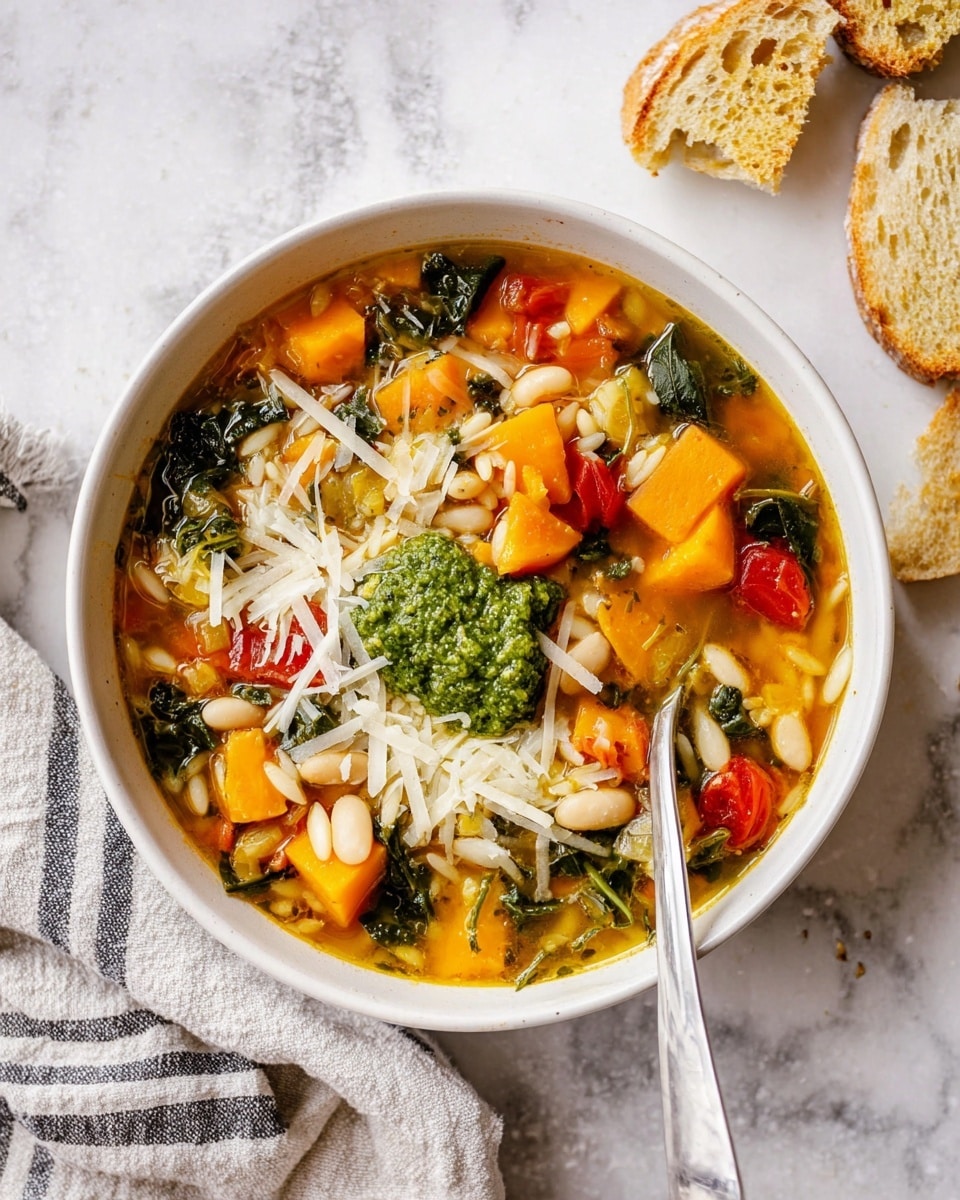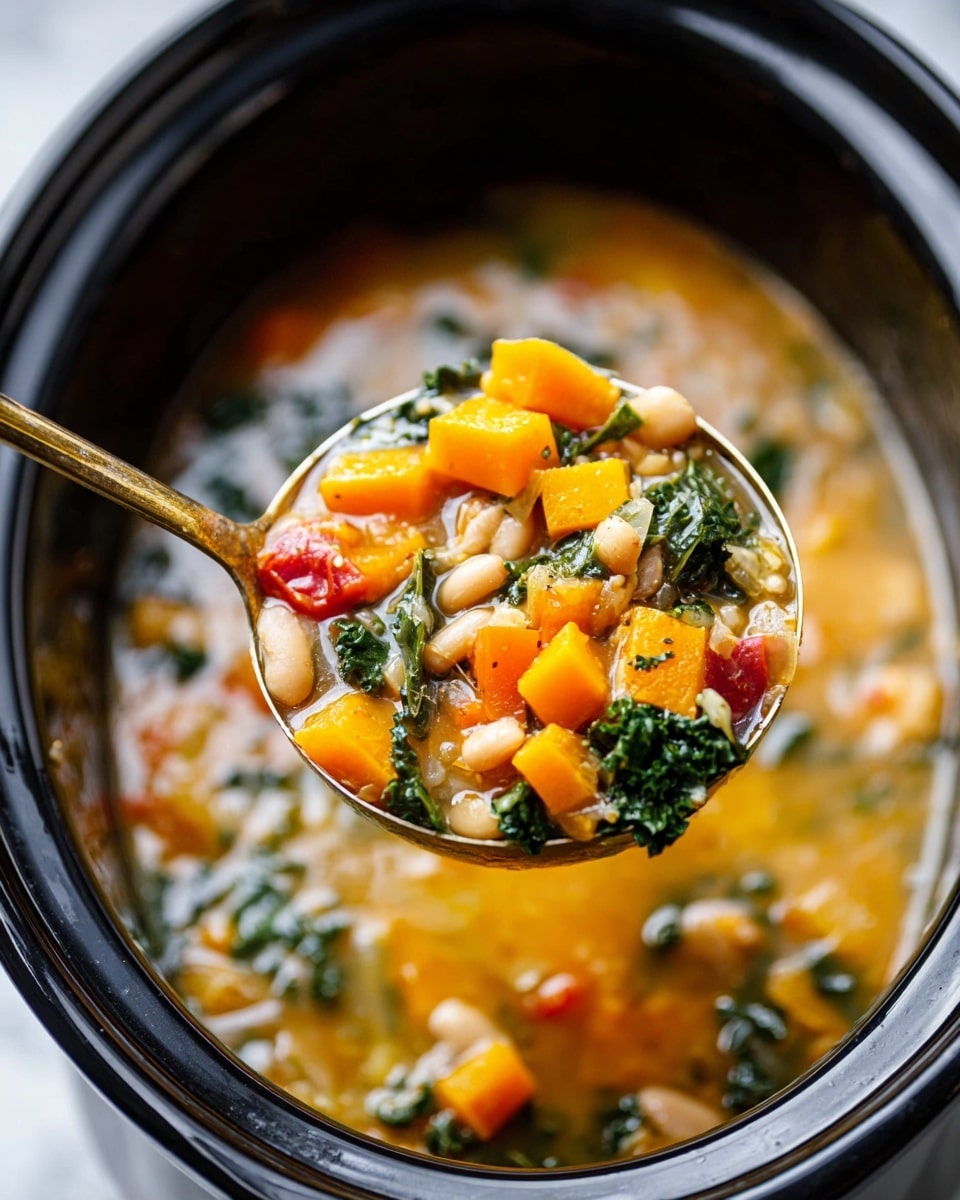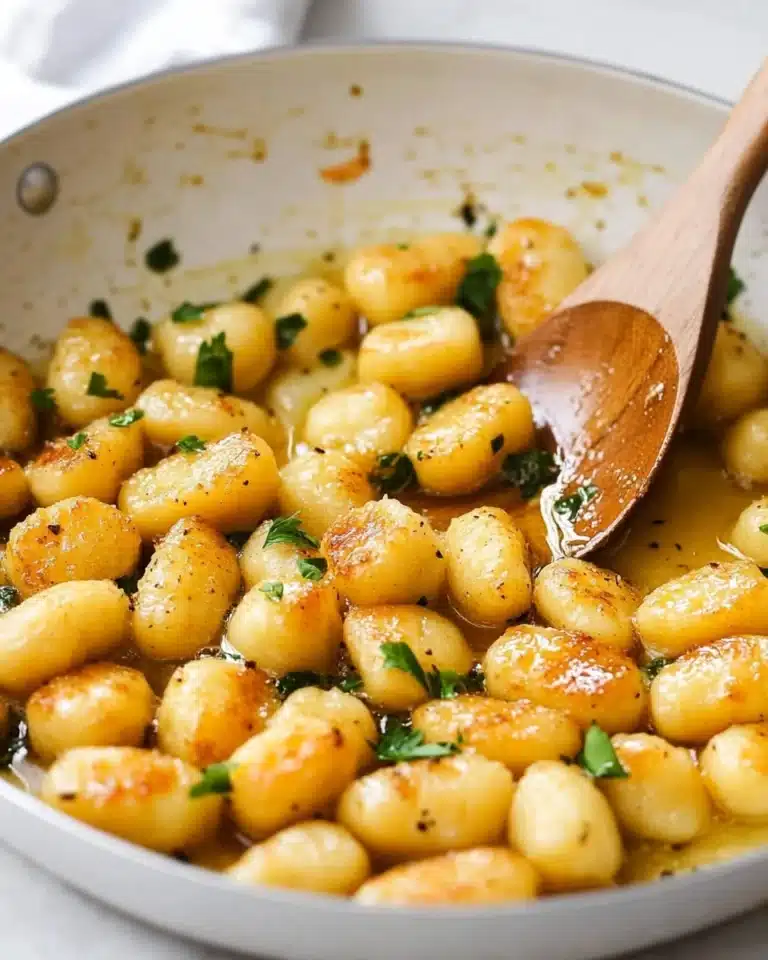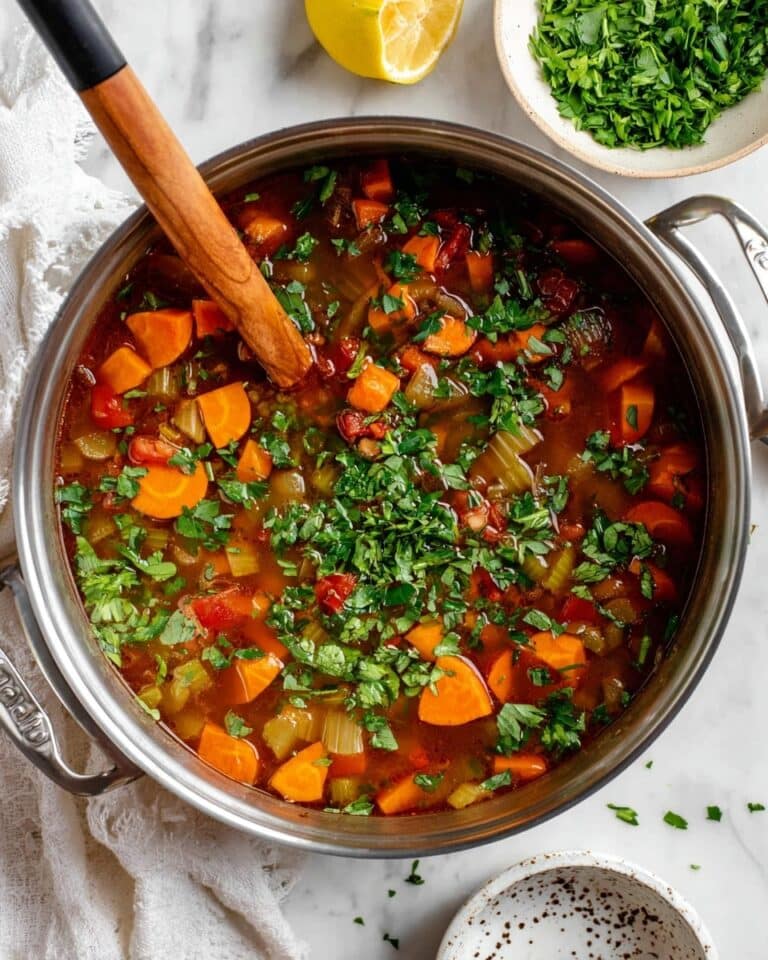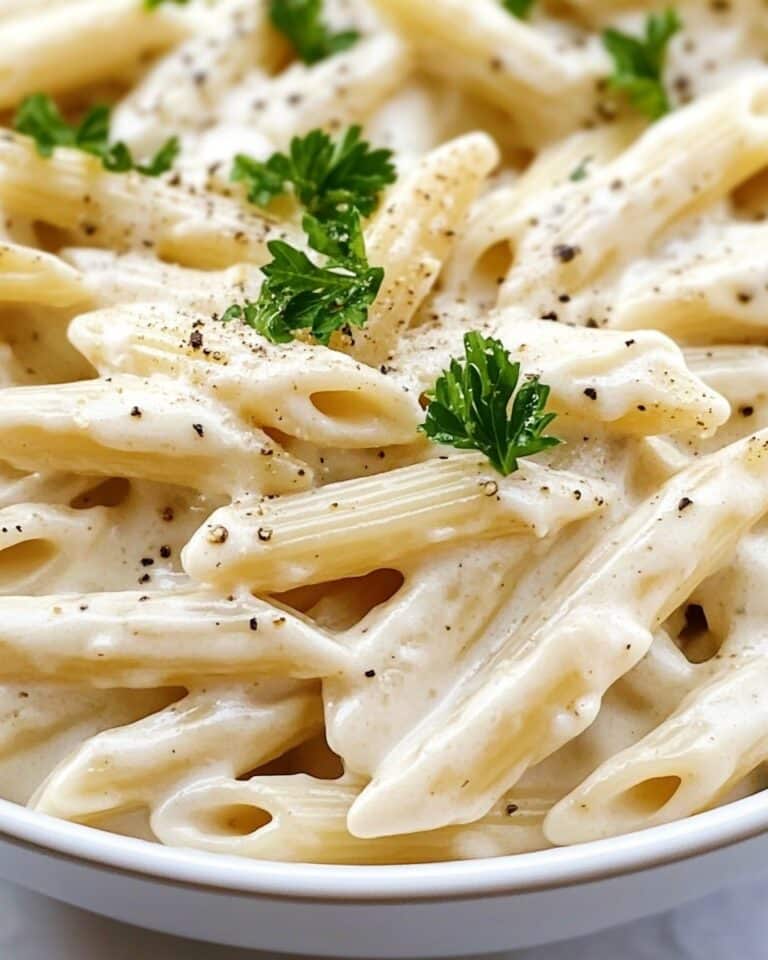When the cold months settle in, nothing hits the spot quite like a warm, hearty bowl of soup. That’s why I’m so excited to share this Winter Minestrone Recipe with you. It’s packed with cozy butternut squash, comforting beans, and fresh greens that make it both delicious and nourishing. I absolutely love how this turns out—each spoonful feels like a warm hug on a chilly day. Stick around, and I’ll walk you through all the little tricks that make this soup a wintertime favorite.
Why You’ll Love This Recipe
- Hearty & Nourishing: Butternut squash and beans make this soup filling and full of comforting textures.
- Easy to Make: Minimal prep and pantry-friendly ingredients mean you can whip it up any time.
- Versatile & Flexible: Customize with your favorite greens or pasta shapes to suit your tastes.
- Perfect for Winter: A warming dish that’s ideal for chilly evenings when you want something cozy and wholesome.
Ingredients You’ll Need
This Winter Minestrone Recipe brings together fresh produce and pantry staples that balance sweetness, earthiness, and a little tang for a perfectly rounded flavor. When shopping, look for firm butternut squash and sturdy kale for the best texture in your soup.
- Butternut squash: Choose a firm, medium-sized squash for sweetness and a buttery texture when cooked.
- Yellow onion: Finely chopped to build a flavorful base without overpowering the soup.
- Garlic: Minced fresh garlic elevates the aroma and depth of flavor.
- Chickpeas: Canned chickpeas save time and add a creamy, nutty protein boost.
- Great Northern beans (or white beans): These add heartiness and a subtle creaminess that’s just right for minestrone.
- Diced tomatoes: Canned tomatoes provide acidity and a vibrant tomato flavor to brighten the soup.
- Vegetable stock: A good quality stock is essential for a rich, savory base.
- Water: Helps balance the soup’s consistency while allowing the flavors to develop.
- Kosher salt: Essential for seasoning and bringing out the natural flavors.
- Italian seasoning: A blend of herbs that complement the soup’s vegetables perfectly.
- Lacinato kale (or baby spinach): Adds freshness and color—kale is heartier, spinach more delicate.
- Red wine vinegar: A splash at the end brings brightness and a subtle tang.
- Cooked small shape pasta: Orzo, ditalini, or other small pasta shapes soak up the broth without overpowering it. For gluten-free needs, use gluten-free pasta.
- Pesto: Adds an herby richness, stirred in right before serving.
- Freshly grated Parmesan cheese: Optional but highly recommended for that extra savory kick.
Variations
I love how adaptable this Winter Minestrone Recipe is. Once you master the base, you can personalize it to fit your dietary preferences or whatever you have on hand—trust me, I often swap ingredients based on my mood or pantry supplies.
- Dairy-Free Variation: Skip the Parmesan or swap pesto for an olive oil drizzle to keep it vegan and still flavorful—I tried this when friends visited with allergies, and no one missed the cheese!
- Protein Boost: Add cooked sausage or shredded chicken for extra warmth and heartiness in colder months.
- Greens Swap: Use spinach, Swiss chard, or even mustard greens instead of kale for different textures and flavors.
- Gluten-Free Pasta: Use any small gluten-free pasta shapes—gluten-free orzo has worked beautifully in my kitchen.
How to Make Winter Minestrone Recipe
Step 1: Build a Flavorful Base
Start by heating a large pot over medium heat. Add a splash of olive oil and sauté the finely chopped yellow onion until it’s translucent and fragrant—about 5 minutes. Then, toss in the minced garlic and cook for another minute, just until it wakes up your senses but doesn’t burn. This base layer of flavors is the heart of your soup, so don’t rush it!
Step 2: Add the Butternut Squash and Beans
Next, add the cubed butternut squash to the pot along with the canned chickpeas and Great Northern beans (drained and rinsed). Stir everything together to combine, then pour in the diced tomatoes, vegetable stock, and water. Bring the soup to a gentle boil, then reduce to simmer.
Step 3: Season and Simmer Low and Slow
Season with kosher salt and Italian seasoning. I usually start with less salt and add more at the end since canned ingredients can sometimes be salty already. Let the soup simmer gently for about six hours—yes, I know that’s a slow cook, but the long simmer allows the squash to melt into the broth and flavors to marry beautifully. If you’re pressed for time, you can simmer for 1–2 hours, but I really recommend low and slow when possible!
Step 4: Stir in Greens, Pasta, and Finish with Vinegar
About 15 minutes before serving, stir in your chopped kale or spinach and the cooked small pasta to heat through. The greens add a fresh pop of color and nutrition, while the pasta makes the soup extra satisfying. Just before serving, mix in the red wine vinegar to brighten all those deep, cozy flavors.
Step 5: Serve with Pesto and Parmesan
Dish out the soup into warmed bowls, and dollop each serving with a spoonful of pesto and a sprinkle of freshly grated Parmesan cheese. This finishing touch brings an incredible herby richness and a touch of savory funk that I adore. Grab a cozy blanket and get ready to enjoy!
Pro Tips for Making Winter Minestrone Recipe
- Low and Slow Simmer: Letting the soup cook gently for hours intensifies flavors and gives the squash a buttery softness I fell in love with.
- Add Greens Last: Stir in kale or spinach near the end to keep them vibrant and slightly crisp—no one likes soggy greens.
- Use Cooked Pasta: Adding already cooked pasta prevents it from overcooking and turning mushy if reheating leftovers.
- Adjust Salt at the End: Taste before salting since canned beans and tomatoes bring their own saltiness—you can always add more later.
How to Serve Winter Minestrone Recipe
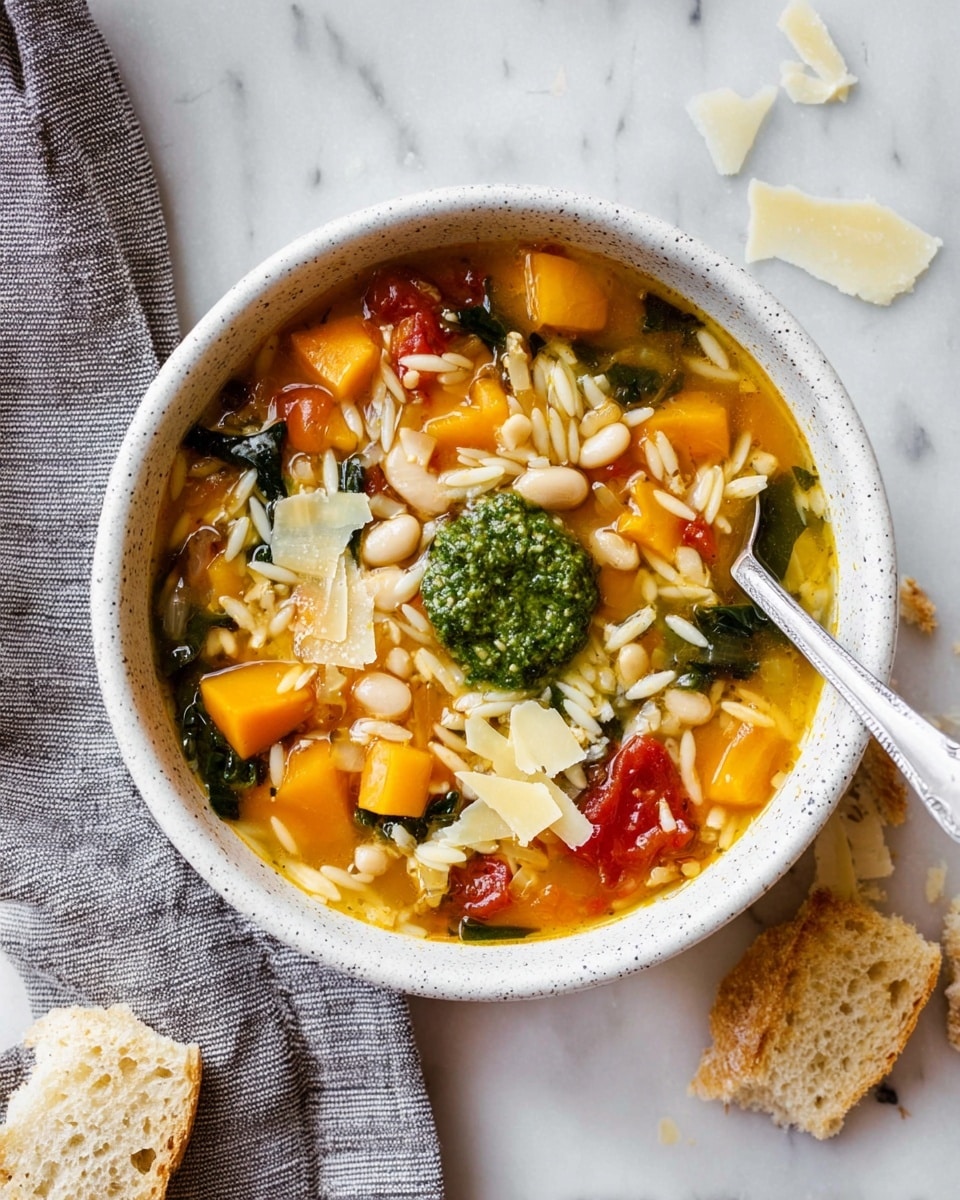
Garnishes
I usually top my bowls with a generous spoonful of pesto and a sprinkle of freshly grated Parmesan—that herby, cheesy combo just takes this soup to the next level. If you want something extra, a few red pepper flakes add a nice gentle heat, and a drizzle of good olive oil always makes it lush and silky.
Side Dishes
My family loves crusty bread or warm garlic breadsticks alongside this soup—they’re perfect for soaking up every last bit of broth. Simple green salads or roasted root vegetables also make lovely, cozy companions on the plate.
Creative Ways to Present
For special occasions, I brighten up the presentation with a swirl of pesto in each bowl and a few fresh herb leaves on top. Serving in rustic bowls with a side of Parmesan shards makes it feel extra homey and special, especially if you’re welcoming guests on a cold winter night.
Make Ahead and Storage
Storing Leftovers
I store leftover Winter Minestrone in airtight containers in the fridge for up to 4 days. Pro tip: Keep pasta separate if you think you’ll have leftovers, then add it in when reheating to avoid mushy noodles. This helped me avoid soggy pasta in the past!
Freezing
This soup freezes beautifully and is a lifesaver on busy weeks. Just omit the pasta before freezing and add it freshly cooked when you reheat. I’ve found this trick keeps the texture fresh and the flavors vibrant.
Reheating
To reheat, gently warm the soup on the stove over medium-low heat and add cooked pasta right before serving. This method keeps everything tasting fresh and prevents overcooked noodles. I usually throw in an extra splash of stock or water if the soup has thickened too much.
FAQs
-
Can I make Winter Minestrone Recipe in a slow cooker?
Absolutely! Just add all the ingredients (except greens and pasta) to the slow cooker on low for 6-8 hours. Add the kale and pasta toward the last 15 minutes of cooking so they don’t get mushy.
-
What pasta works best in Winter Minestrone Recipe?
Small shaped pasta like orzo, ditalini, tubettini, or elbow macaroni works best because they blend into the soup without overpowering it. Gluten-free options are great substitutes too.
-
Can I freeze Winter Minestrone Recipe?
Yes! Freeze without the pasta and add freshly cooked pasta when reheating for best texture and flavor.
-
Is this Winter Minestrone Recipe vegan?
The base recipe is vegetarian and can easily be made vegan by omitting the Parmesan and choosing vegan pesto or simply drizzling with olive oil.
Final Thoughts
This Winter Minestrone Recipe has become one of my go-to soups for the season—not just because it’s so satisfying, but because it’s forgiving and flexible. Whether you’re new to making soups or a seasoned pro, you’ll find that it’s a crowd-pleaser every time. I can’t wait for you to try it—it’s like a warm, flavorful hug in a bowl that’ll brighten up any winter evening.
Print
Winter Minestrone Recipe
- Prep Time: 10 minutes
- Cook Time: 360 minutes
- Total Time: 370 minutes
- Yield: 8 servings
- Category: Soup
- Method: Stovetop
- Cuisine: Italian
- Diet: Vegetarian
Description
This Winter Minestrone is a hearty and comforting vegetarian soup perfect for the cold season. Packed with butternut squash, beans, kale, and pasta, it blends a variety of textures and flavors into a nourishing, easy-to-make dish that warms you from the inside out.
Ingredients
Vegetables and Beans
- 4 cups cubed butternut squash
- 1 medium yellow onion, finely chopped
- 2 cloves garlic, minced
- 1 (15-oz) can chickpeas, drained and rinsed
- 1 (15-oz) can Great Northern beans or cannellini, drained and rinsed
- 1 (15-oz) can diced tomatoes
- 1 cup chopped Lacinato kale or baby spinach
Liquids and Seasonings
- 1 quart vegetable stock
- 2 cups water
- 3 teaspoons kosher salt
- 1 teaspoon no-salt added Italian seasoning
- 1 tablespoon red wine vinegar
Other Ingredients
- 1 cup cooked small shaped pasta (orzo, ditalini, tubetti, or elbow macaroni; gluten free if desired)
- Pesto, for serving
- Freshly grated Parmesan cheese, for garnish
Instructions
- Prepare Vegetables: Cube the butternut squash and finely chop the yellow onion. Mince the garlic cloves to prepare the base for the soup.
- Combine Ingredients: In a large pot or Dutch oven, add the cubed butternut squash, chopped onion, minced garlic, drained chickpeas, drained Great Northern beans, and diced tomatoes. Pour in the vegetable stock and water, then season with kosher salt and Italian seasoning.
- Simmer the Soup: Bring the mixture to a boil over medium-high heat, then reduce to a low simmer. Cover the pot and let the soup cook gently for about 6 hours until the butternut squash is tender and flavors meld.
- Add Greens and Pasta: Stir in the chopped Lacinato kale or baby spinach and the cooked pasta shape. Continue to simmer for an additional 10-15 minutes until the greens are wilted and heated through.
- Finish with Vinegar and Serve: Remove the soup from heat and stir in the tablespoon of red wine vinegar to brighten the flavors. Ladle the soup into bowls, then top with a spoonful of pesto and freshly grated Parmesan cheese. Serve hot.
Notes
- This soup is perfect for a cozy winter dinner and is hearty enough to be a filling meal on its own.
- You can use any white beans in place of Great Northern beans, such as cannellini.
- For a gluten-free version, substitute regular pasta with gluten-free pasta shapes.
- Leftovers reheat well and taste even better the next day as flavors continue to develop.
Nutrition
- Serving Size: 1 bowl (about 1/8th of recipe)
- Calories: 285 kcal
- Sugar: 3 g
- Sodium: 481 mg
- Fat: 0.4 g
- Saturated Fat: 0.1 g
- Unsaturated Fat: 0.14 g
- Trans Fat: 0 g
- Carbohydrates: 19 g
- Fiber: 3 g
- Protein: 3 g
- Cholesterol: 0 mg

